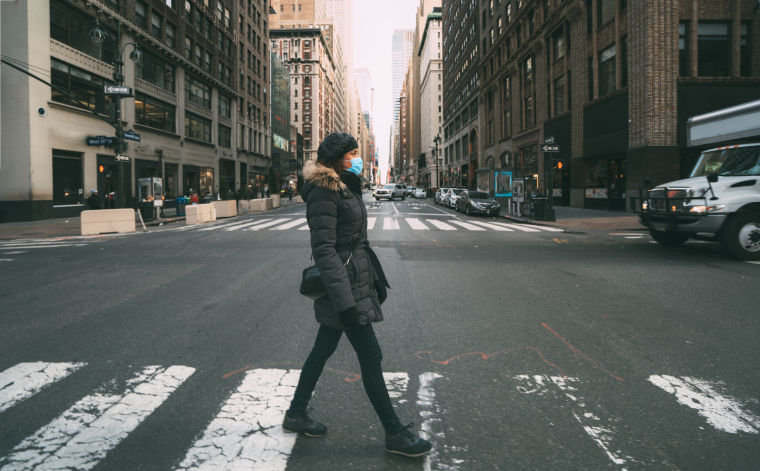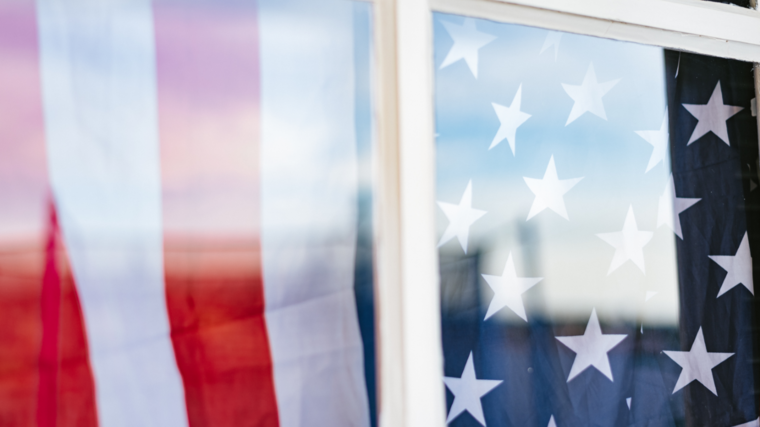November 14 reforecast due to OSHA rule stay
Trump Appointees block OSHA testing or vaccination rule, resulting in 35,000 to 45,000 more deaths over the next three months
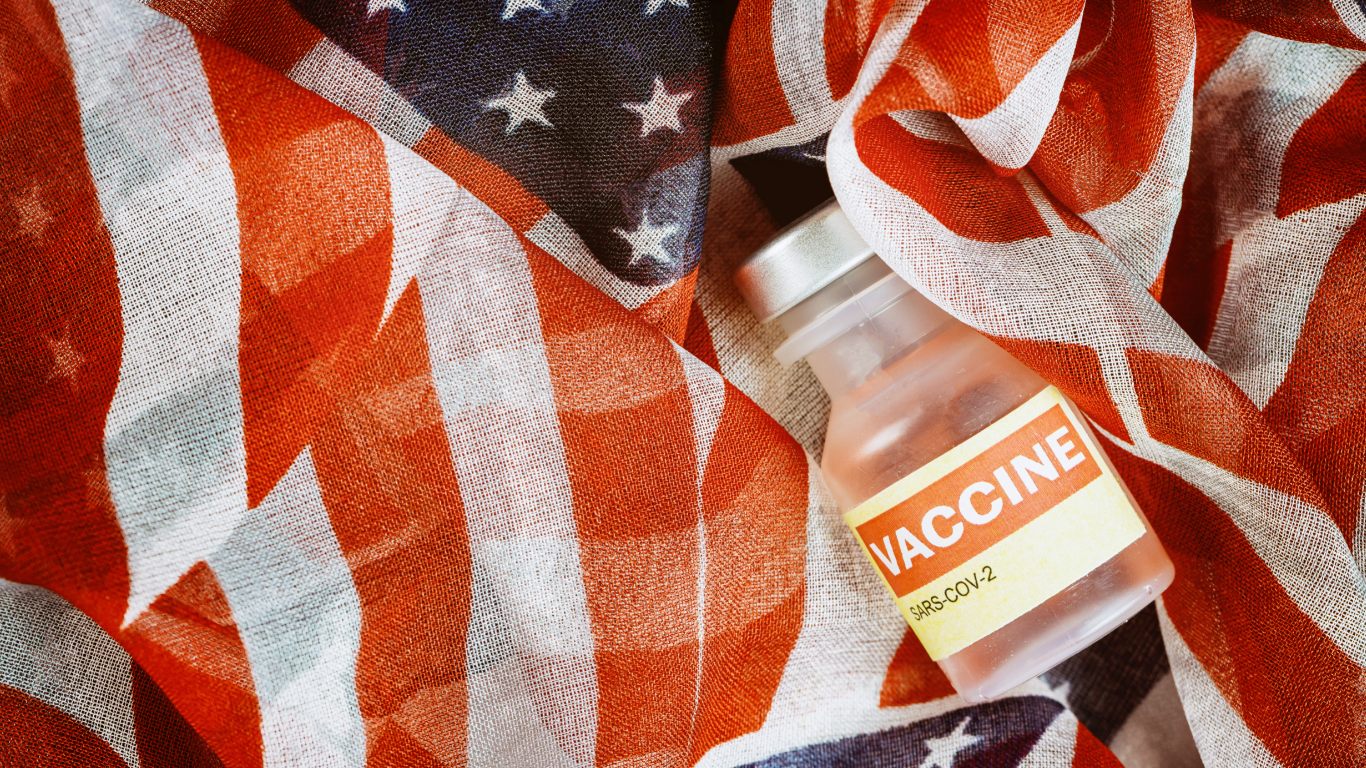
Article series
COVID-19 impact
- Making healthy habits stick after COVID
- Shobservatory Research Chronicles: Lockdowndiaries
- Capturing early stage consumer feedback, post-COVID
- Evolution of physical space in retail and hospitality
- November 2021 COVID-19 forecast & commentary
- Ethical brands in pandemic times
- November 14 reforecast due to OSHA rule stay
- COVID-19 December 2021 forecast for the USA
- Omicron
- COVID-19 forecast in the USA
- COVID-19 update for the USA
- COVID-19 Omicron retrospective
- Crises and community
- Research that makes a difference
A single decision, by a three panel court of appeals in Louisiana consisting of two Trump appointees and one Reagan appointee, issued a decision significant enough to require a forecast alert and re-forecast of the COVID-19 death toll. An incremental 35,000 to 45,000 people will die over the next three months of COVID-19 as a result of the court stay earlier this month.
Issuing the stay, the two Trump appointees issued their opinions. (the Regan appointee did not). Federal Judge Kurt Englehadt instructed OSHA to “take no steps to implement or enforce the mandate” after claiming COVID-19 is neither a “grave danger” nor a “new hazard,” standard that must be met for OSHA to have the emergency power to enact such a rule. Judge Suart Duncan noted the courts “expect Congress to speak clearly when authorizing an agency to exercise powers of ‘vast economic and political significance,’” noting that “OSHA’s rule reaches two-thirds of all private-sector workers in the nation” and compels covered employers to make employees get vaccinated or get weekly tests and keep records.
As I understand it, OSHA is responsible for workplace safety and after the full FDA authorization of COVID vaccines, OSHA issued a rule that all employers with 100 or more employees either require full vaccination by January 4th or require weekly testing. The rule allowed for time off to get vaccinated and recover. Weekly testing offered an option for those that choose not to be vaccinated and the employer could decide to cover the nominal expense or have unvaccinated employees pay the expense. As the plan for large employers to require vaccination or weekly testing was announced by President Biden on September 9th, 2021, after which I included the relevant details in my forecasts.
However, as a result of the stay order and slower vaccination rates, I expect the November death toll to rise to 779,973 (an incremental 5,333 deaths). I expect the December death toll to rise to 815,660 (an incremental 8,167 for the month and 14,424 deaths for the two months). I expect the January death toll to be significantly higher as herd immunity will now be achieved through the unvaccinated becoming infected and either recovering or dying rather than through a significant increase in vaccinations.
Importantly, this shift in timing of when the country exits the pandemic is critical because the Christmas and New Years shopping season and family gatherings should have benefited from the extra protection afforded by the incremental vaccinations and testing under the OSHA rule. Without this added protection of vaccinations, testing and masks, we should now expect infections to be significantly higher over the Christmas shopping and family gathering dates. We should expect a post Christmas and New Year’s surge that carries significant incremental deaths through January.
As documented in my and others research, the pandemic shifted consumer spending from services to goods. This shift is a key driver of supply chain bottlenecks and inflationary pressures today. By prolonging the pandemic, this stay order is negatively impacting the economy. Specifically, it reduces the workforce as unvaccinated workers are more likely to become infected, hospitalized and die. It slows the shift back to services. It adds additional inflationary pressure as both the reduction in workforce due to COVID-19 illness or concern of illness and increased purchase of goods over services result in immediate inflationary pressures. More significantly, the stay order will predictably lead to significantly more COVID-19 deaths over the next 90 days. If that’s not “grave danger” as Judge Engelhart opinioned, it is certainly a lot more graves. It is worth noting that the Judge’s opinion makes note of “purported emergency the entire globe has endured for for nearly two years” but seems completely unaware of 1) this wave is a wave caused by and perpetuated by the unvaccinated and 2) other democracies have enacted reasonable public health measures which he argues are unnecessary.
This surge began taking an astonishing number of lives, starting in August. The forecasts from the CDC, IHME’s and my forecast all significantly underestimated the death toll due to unvaccinated people (see tables in Accuracy of Forecast section). Unvaccinated people are more likely to become infected and spread Delta to others. Unvaccinated people become hospitalized 18x higher than vaccinated people, according to our contact tracing and genomic sequencing research. Over 95% of the deaths in August, the month immediately preceding OSHA rule, were among unvaccinated, according to the CDC.
Countries in the EU like Denmark use vaccine passports and are extending their use for employment - a practice quite similar to what the OSHA rule would have implemented. In fact, many democracies have gone much further. Austria, responding to this wave fueled by unvaccinated people, recently instituted a lockdown for unvaccinated people 12 and over. Unvaccinated people are not allowed to leave their home unless it is for essential reasons. In justifying the lockdown for the unvaccinated, Austria’s Prime Minister referred to their vaccination rate of 65% as shamefully low, and correctly notes that unvaccinated people are 70% more likely to be affected by the virus. I’m not suggesting the US take the same action, even though Austria vaccination rate is much higher than the US rate, and nearly double the rate of most counties in the states the Fifth Circuit Court covers, and the actions of the unvaccinated put at risk the economic welfare of the country and the health and safety of co-workers and customers that are vaccinated. Rather, I am pointing out that accessing what is a reasonable response to this wave propelled by the unvaccinated should include a review of what other western democracies have determined is an appropriate response. As of last week, the US has higher deaths per million than Austria (and the majority of counties in the EU).
It is unclear what basis the Judge used to determine reasonable measures versus what he termed “over-reach” given that most democracies have used broader powers than envisioned in the OSHA rule. It is unclear what standard constitutes an emergency for Judge Engelhardt, if surging deaths among unvaccinated with a forecast of 150,000 avoidable deaths over three months from the time the OSHA rule was developed isn’t an emergency.
The math
There are approximately 84 million Americans that work for companies that are covered by this rule, mostly adults. Companies like Tyson Foods and United Airlines that have required vaccinations have achieved 91% and 99% vaccination rates respectively versus the current adult vaccination rate in the US of nearly 70% (including over 85% of those over 65 and 58% of all Americans) at the time I issued the last monthly Forecast (November 2021). My projections expected the vaccination rate to increase among workers where the rule applied to approximately 85% to 90%.
My forecast calculated that this rule would add about 16.4 million incremental vaccinated adults in the US by the end of the year. Furthermore, the additional vaccinated population would result in the US achieving a level of herd immunity protection (cumulative immunity of 85% per model) around December 8th, just after the post Thanksgiving surge, and before the critical Christmas and New Year’s holiday gatherings. However, without these vaccinations, infections will grow at a faster rate, as will hospitalizations and deaths. Without these vaccinations, the same level of herd immunity protection will not be achieved before the December holiday season, but rather after it, some time around mid January.
Specifically, the model predicted 2nd dose vaccinations to increase to 62% among the total US population by the end of November and 67% by the end of the year. Since some protection begins weeks earlier, with the first dose, the model expected downward pressure on COVID-19 transmission, hospitalizations and deaths. However, the stay order issued by the Fifth Circuit Court of Appeals based on complaints filed in Texas, Mississippi and Louisiana effectively neutralizes the positive benefit expected in the model.
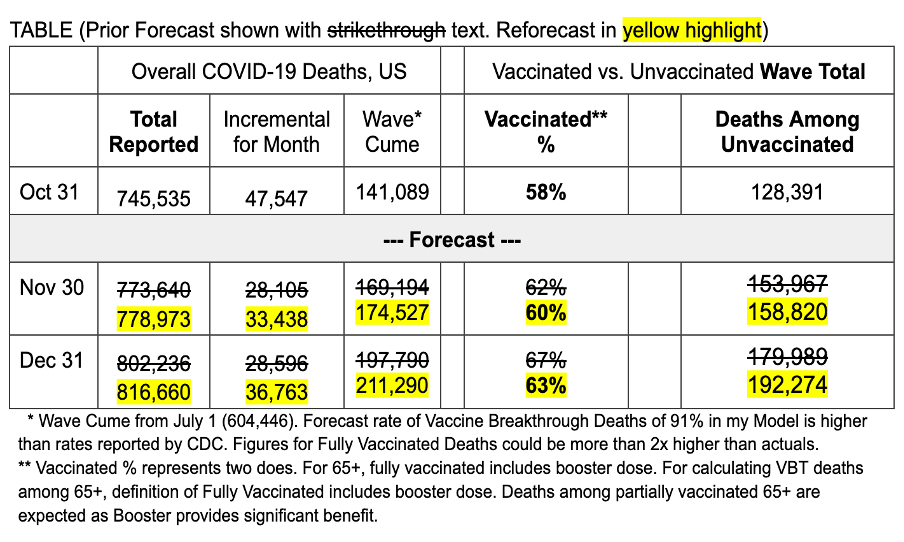
Of the 16.4 million unvaccinated people that I calculate would have been vaccinated based on the OSHA rule, some have already been infected (57% based on my model), but approximately 7 million (43%) have not and will become infected over the next few months. In addition, infection based immunity has been documented to wane over time and to be less protective than the combination of infection recovery and vaccination, and less protective than vaccination alone. Therefore, I am 100% confident in projecting an incremental 10,000 deaths due to this stay order among American workers over the next three months. The total death toll from the courts unusual move of halting an OSHA worker safety rule is likely to be in the 35,000 to 45,000 incremental deaths range.
The 35,000 to 45,000 incremental deaths is based on the Infection Fatality Rate (IFR of 0.40) used in the model and considers the incremental transmission from unvaccinated people. Most at risk of death due to this stay order are unvaccinated workers, unvaccinated customers, older vaccinated co-workers and customers, and family members. While hospitalizations and deaths among vaccinated individuals are less common than among the unvaccinated, the model also forecasts incremental deaths due to the unvaccinated and un-tested workers spreading the virus at a rate that is higher had vaccinations and testing been in place as envisioned by the OSHA rule.
Conclusions
As part of my education on the legal interventions that have historically shaped the pandemic response in the US I reviewed summaries of prior decisions. It is worth noting that I could find no precedent for laws that reduced public safety in a pandemic, such as blocking vaccines or masking mandates. In fact, the current situation of conservative states banning masking mandates and vaccination mandates is an inversion of the historical situation. In the past, most cases were brought about by a state doing more than the national norm in implementing additional public safety measures - not blocking public safety measures to do far less than the national norm.
To modify the, “Justice delayed is justice denied” saying, by extending the stay order for the OSHA rule, the actions of the court will significantly delay protections expected for millions of workers through testing and vaccinations to end this pandemic before the critical Christmas and New Years Holidays. As a result, at least 10,000 more people will die of COVID, and this assumes that many employers follow through with vaccination programs of their own, as CITIBANK announced recently (which included a $2,000 bonus for vaccination) or as Delta announced, where the unvaccinated pay $200 a month more for their insurance premium. The more likely scenario is that the stay order on the OSHA rule derails most employers from doing anything specific with vaccination and testing requirements. Instead, most employers, especially those in conservative states with the lowest vaccination rates, will sit on their hands and do nothing. In fact, some states like Texas have executive orders or laws forbidding employers from implementing vaccination mandates.
Implications
Unvaccinated individuals should consider getting vaccinated or tested regularly. Vaccinations reduce risk of hospitalization and death from COVID, and reduce the risk of becoming infected and infecting others, which could lead to their hospitalization or death. For those that choose not to be vaccinated, wearing a mask provides a level of protection from infection and from spreading to others. Weekly testing can catch infections early, which is essential for current treatments to be effective. Regular testing is also helpful in reducing the risk of infecting co-workers, family members and those in the community.
Large employers should consider following through with their plans for vaccination and testing, even without the OSHA rule and risk of fines for non-compliance. This action will protect workers and customers, reduce medical costs and risk of missed work due to COVID illness or hospitalization.
Individuals should choose to work for companies with high vaccination rates for their own safety and the safety of their families. During the holiday season, consider accessing the risk of visiting family members that are unvaccinated, or visiting areas with low vaccination rates. Brown’s School of Public Health has a risk by county dashboard that may be helpful.
About the Forecast
The Briggs-3 Forecast, initiated in November 2020 and published monthly by Research World and US Based Marketing Research Trade Association, The ARF, along with a monthly radio interview, has been among the most accurate forecasts available. The table below summarizes the accuracy of the forecast in comparison to the COVID Forecasting Hub, which is used by the CDC. The Briggs-3 model has been 39% more accurate over the past 12 months. The Briggs-3 longer-term forecast, projecting three months out, has been 48% more accurate than the IHME forecasts
The model has been used by Ad Council to aid in vaccination public service announcement advertising planning and delivery. The model has been adopted by Brown University School of Public Health and extended to forecast at the US State and County level. A full description of the methodology is available. Brown also has a detailed method and sources document covering the model overall as well as the state and county level of details.
Accuracy of forecast
In the table below, the Briggs-3 forecast is compared to COVID Forecasting Hub for the last 12 months. The forecast is compared to the actuals as reported by the New York Times github. The incremental deaths for the month are compared to the actual to calculate the forecast accuracy. The more accurate forecast is highlighted in green. The absolute difference between forecast and actual is calculated at the bottom of the table. Overall, the Briggs-3 averages within 9.9% of actuals while the COVID Forecast Hub averages 16.2%, making the Briggs-3 39% more accurate, on average. Over the past 12 months, the Briggs-3 Forecast has been more accurate in 8 of the 12 months, while the COVID Forecasting Hub has been more accurate in 4 of the last 12 months. Both models tend to under-estimate total COVID-19 deaths by 8.9% on average.
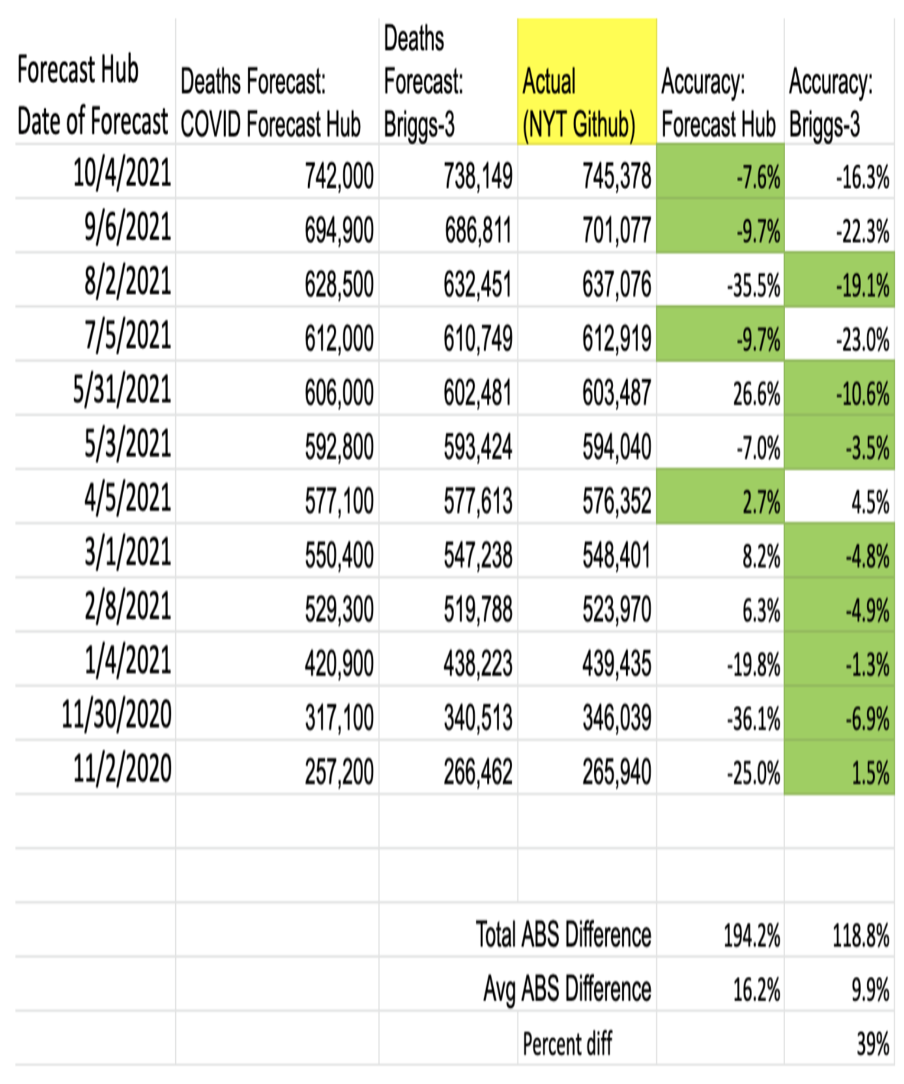
For the forecast made three months in advance, Briggs-3 is compared to the IHME forecast. (COVID Forecasting Hub publishes a 28 day forecast and does not publish a three month forecast.) The IHME forecast uses a different source for total deaths reported, therefore IHME’s counts are converted to incremental deaths forecasted over the three month period for direct comparison to the Briggs-3 Model of deaths forecasted for the same three month period of time. The Briggs-3 forecast was more accurate in 11 of the past 12 months. In addition, the Briggs-3 absolute difference from the actual was 48% more accurate than IHME. On average, the Briggs-3 forecast is 9.4% under that actual deaths, while the IHME forecast averaged 15.7% under the actual deaths. Both models underestimate total deaths reported.
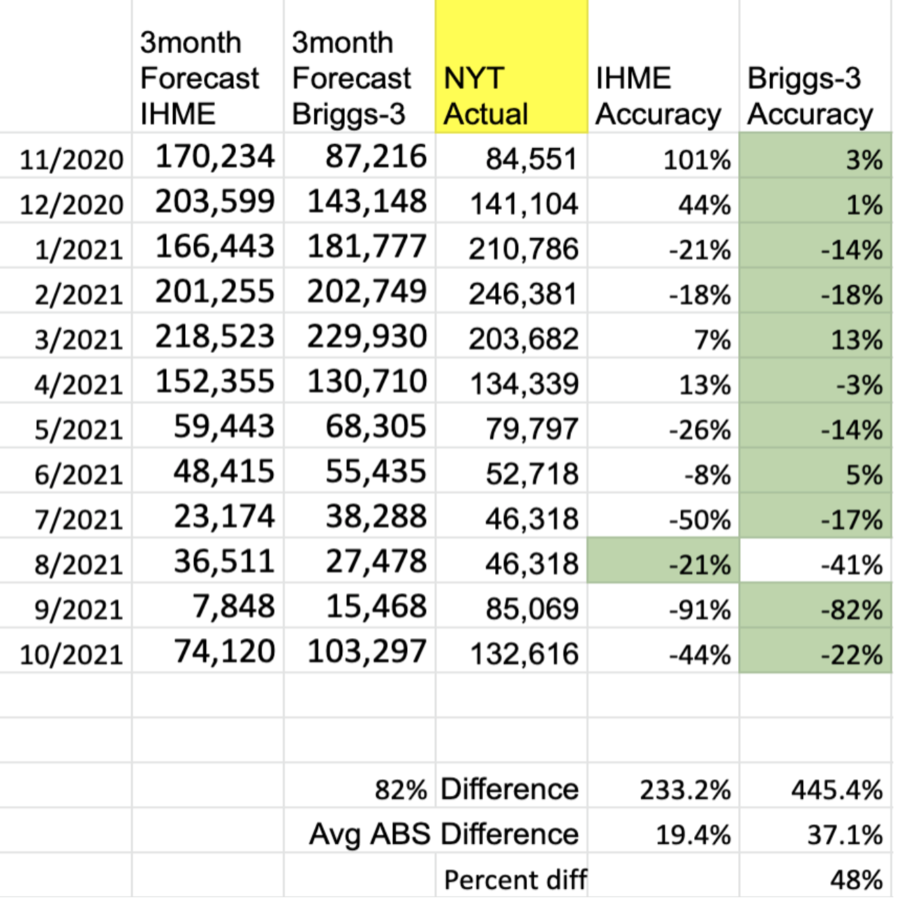
Considering the average difference in forecast versus the actuals over the past 12 months, it is probable that the re-forecast of at least 10,000 incremental deaths due to the court’s stay of the OSHA rule, and likely between 35,000 and 45,000 reported deaths, is a conservative estimate.
Rex Briggs
Consultant and Author at Marketing EvolutionRex Briggs was named one of the dozen “best and brightest” in media and technology by Adweek, and one of the people to “watch and learn from” according to Brandweek. He has been honored with the Atticus Award for his work in direct marketing, the Tenagra Award for outstanding contribution to branding and ESOMAR’s Fernanda Monti Award for his work in CRM. Rex has also won international research awards for his work in understanding website effectiveness and online advertising. His work in understanding the effects of advertising in television, magazine and online was nominated for the prestigious John and Mary Goodyear Award for best international research. Rex was the first director of research for the Internet Advertising Bureau (IAB), and pioneered attribution analytics. His research has been translated into a half-dozen languages and he has taught at leading universities around the world.
Rex is the best-selling author of “SIRFs-Up – How Algorithms and Software are Changing the Face of Marketing.” The book tells the story of how brands can better optimize advertising spend with equations known as “Spend to Impact Response Functions” (SIRFs) and how they will become an integral tool for marketers of every size and vertical for allocating budgets and forecasting business results. Rex also is the best-selling author of “What Sticks: Why Most Advertising Fails and How to Guarantee Yours Succeeds.” The book draws learning from ROI measurement from 36 major marketers. The studies were designed by Marketing Evolution to track media expenditure in real time and offer solutions on how marketers can improve ad effectiveness. “What Sticks” was named the #1 marketing book by Advertising Age, and was featured on CNBC, Bloomberg, CNN, NPR and The Economist. Rex is an instructor for the Association of National Advertisers’ (ANA) School of Marketing, where he holds workshops on ROI measurement technologies and IMPACT Marketing.
Rex founded Marketing Evolution in 2000 and sold his interest in 2019. He is an independent consultant and author. Rex is known as one of the world’s leading experts in marketing ROI measurement and optimization technologies. His expertise derives from direct experience measuring and improving the performance of a wide range of marketing programs for more than 100 Fortune 500 marketers.
Article series
COVID-19 impact
- Making healthy habits stick after COVID
- Shobservatory Research Chronicles: Lockdowndiaries
- Capturing early stage consumer feedback, post-COVID
- Evolution of physical space in retail and hospitality
- November 2021 COVID-19 forecast & commentary
- Ethical brands in pandemic times
- November 14 reforecast due to OSHA rule stay
- COVID-19 December 2021 forecast for the USA
- Omicron
- COVID-19 forecast in the USA
- COVID-19 update for the USA
- COVID-19 Omicron retrospective
- Crises and community
- Research that makes a difference

